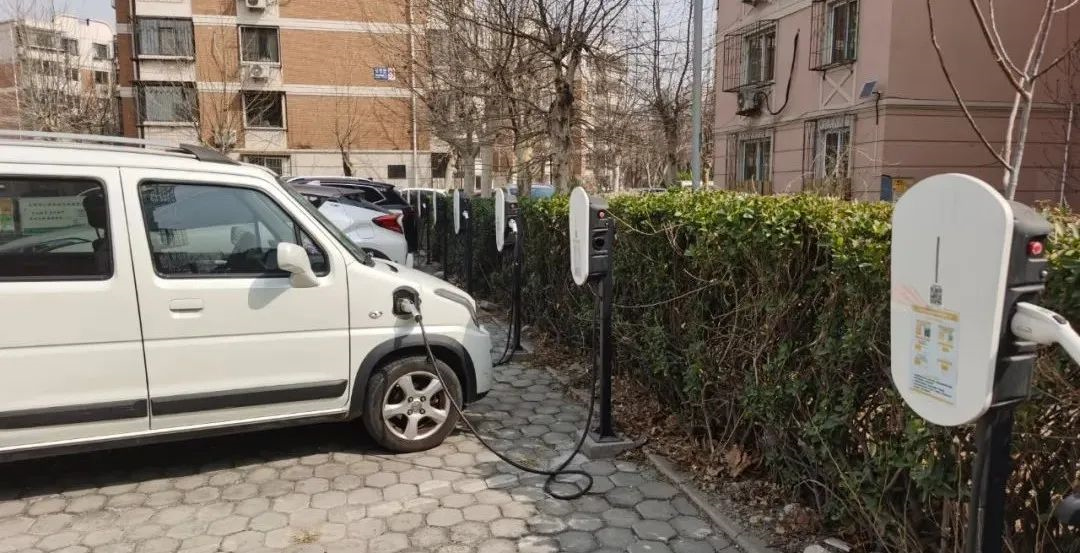Three Years Covering Almost 1000 Residential Areas, Building 11,000 Charging Piles — This is no longer just about charging pile business, it’s about serving the people and functioning as an economic lever.
This is my biggest impression after conducting research on community public charging in Tianjin.
It is considered a public service because it is convenient for residents to charge their electric vehicles in their communities.
It is also an economic lever because the existence of community charging stations stimulates more people to purchase electric vehicles.
Nowadays, new cars are like crops growing one after another, and product attractiveness is no longer an issue. However, consumers are still concerned about charging issues and have not acted. Especially when they cannot charge their vehicles in residential areas, which hinders the widespread adoption of electric vehicles.
Charging in residential areas is the best charging experience for electric vehicle owners. But due to various issues such as limited community power supply, fixed parking spaces, safety hazards, and maintenance management, electric vehicle owners find it increasingly difficult to apply for private charging stations, and it is almost impossible to realize “one car, one station” on a large scale.
Community charging has always been a topic of great concern to us, and the reasons and difficulties can be found in our past article “How to Solve Community Charging Issues”. Is there a feasible and replicable solution?
In early March, we interviewed officials from the Tianjin Development and Reform Commission, senior executives of various charging operators, property management personnel, and electric vehicle owners, and conducted on-site surveys of 5 community charging stations. Tianjin, as a model city for community public charging, can provide some reference for everyone.
Tianjin: Empowering Communities with Charging Infrastructure
“Starting from 2019 until 2021, for three consecutive years, the Tianjin Municipal Government has included community public charging stations as one of the 20 annual projects that benefit the people. By the end of 2021, the community public charging stations have covered nearly 1000 residential areas, with 11,000 charging piles built, which has greatly solved the problem of new energy vehicle owners having difficulty charging at home,” said Zhao Jianhui, Deputy Director of the Industrial Division of the Tianjin Development and Reform Commission.
Zhao Jianhui is a post-80s generation who was one of the earliest public officials to participate in the promotion of new energy vehicles and the construction of charging infrastructure.
His words are down-to-earth, spoken quickly, and logically clear. He also does not hide his thoughts on community public charging.
In Zhao Jianhui’s view, early charging infrastructure construction was primarily aimed at point-to-point public transportation and sanitation vehicles. With the rapid increase of ride-hailing services, public charging stations have become more numerous and efficient, and have now largely achieved self-sustainability through market-driven solutions. However, the development of individual charging infrastructure has been slow for various reasons, causing inconvenience to electric vehicle owners charging their vehicles.
In the urban living structure of Tianjin, letting charging conflicts develop wilfully will only intensify. Someone needs to take the lead in breaking the deadlock.The increase of new energy vehicles in Tianjin is also a clear proof. According to Zhao Jianhui, there were more than 40,000 new energy vehicles added in Tianjin in 2020, and more than 90,000 added in 2021, which doubled the number. Moreover, from the purchasing proportion, individual consumers account for more than 90%.
Now, the coverage of community public charging stations has a direct stimulating effect on new car purchases. This can be reflected by the charging volume of community charging stations. Many car owners decided to buy new energy vehicles because they had access to the charging stations.
From the government’s perspective, Zhao Jianhui said that there were several reasons for installing community public charging stations. Firstly, as the number of residents buying electric vehicles continues to increase, the demand for installation of charging stations in the community will also increase accordingly. However, most communities in Tianjin do not have designated parking spaces, and owners pay for parking while parking spaces are randomly occupied after entering the community. According to the current regulations for private charging pile installation, without a designated parking space, charging piles cannot be installed. This has become a disadvantage for most car owners.
Secondly, one car needs one charging pile, and the community will run out of power sooner or later, especially in old communities. The people who bought cars earlier can install charging piles, but those who buy cars later cannot. This is not fair to the latecomers.
Thirdly, most existing residents’ applications for charging pile installation are for the charging piles that came with the cars when they were purchased. The general warranty period is 1-2 years. After the warranty period, the car owners have no maintenance ability, and as electrical equipment, there will inevitably be safety hazards after a long time. However, residents cannot afford the maintenance.
Fourthly, personal charging piles can cause social resource waste. Each time an individual applies for installation, the power line needs to be re-surveyed, the bridge and pipeline need to be laid, and the cost of construction is high, and the construction is repetitive. In a few extreme cases, more than 100,000 yuan may be spent for the power line to reach only one charging pile. Moreover, after installation, most personal charging piles are idle most of the time.
Therefore, in the second half of 2018, Tianjin launched a pilot project of community public charging stations, summarized the experience and officially became one of the people’s livelihood projects in 2019.
Government Initiation, Enterprise Implementation, and Property Participation
The community is the smallest unit of social management, but also the most complex one.
In the ecosystem of charging piles, there are many groups such as the owners’ committee, property, power grid, charging operator, and owners.
There are also a series of questions: Which communities should be included? Who will build? Who will coordinate the property? How to solve the problem of power access? How to review and acceptance? How to manage after the completion of installation…
It’s clear that unified guidance and division of labor are needed.
“The way Tianjin takes is that the government takes the lead in policy coordination and guarantee, while charging operators execute the construction, and property and street/community committees coordinate and cooperate, and third-party organizations check and verify,” explained Zhao Jianhui.Facing the difficult community environment, it is hard for social forces to make any breakthrough, and it is most effective for local governments to take the lead in solving the problem. In 2019, the Development and Reform Commission of Tianjin Municipality released the “Implementation Plan to Accelerate the Construction of Public Charging Stations in Residential Areas” (hereinafter referred to as the “Plan”). The “Plan” is not long, only six pages, but it is the “sledgehammer” to open up community charging.
Firstly, the target for that year was made clear, which is to complete the construction of 1000 charging stations in 100 residential areas by 2019.
Secondly, demand was widely solicited. For residential areas with actual charging needs, street offices, neighborhood committees, property management companies, or vehicle owners can independently apply.
Then, construction companies were rigorously screened for contract and responsibilities were allocated. Every year, Tianjin selects 6-8 charging operation companies that meet the requirements and standardizes their equipment specifications, construction, and operation management in accordance with national requirements and industry standards. Third-party professional organizations are selected to carry out completion acceptance. Street offices, neighborhood committees, and property management companies are required to coordinate and cooperate in site survey and construction.
Regarding the problem of difficult electricity access, which is particularly worth mentioning, the “Plan” requires power companies to carry out power facility transformation and rational allocation of power supply capacity, implement the “Zero Investment” policy for low-voltage small and micro enterprises external power source, realize zero-cost electricity for low-voltage users, and uniformly implement the large industry electricity prices and apply peak and valley time-of-use tariffs.
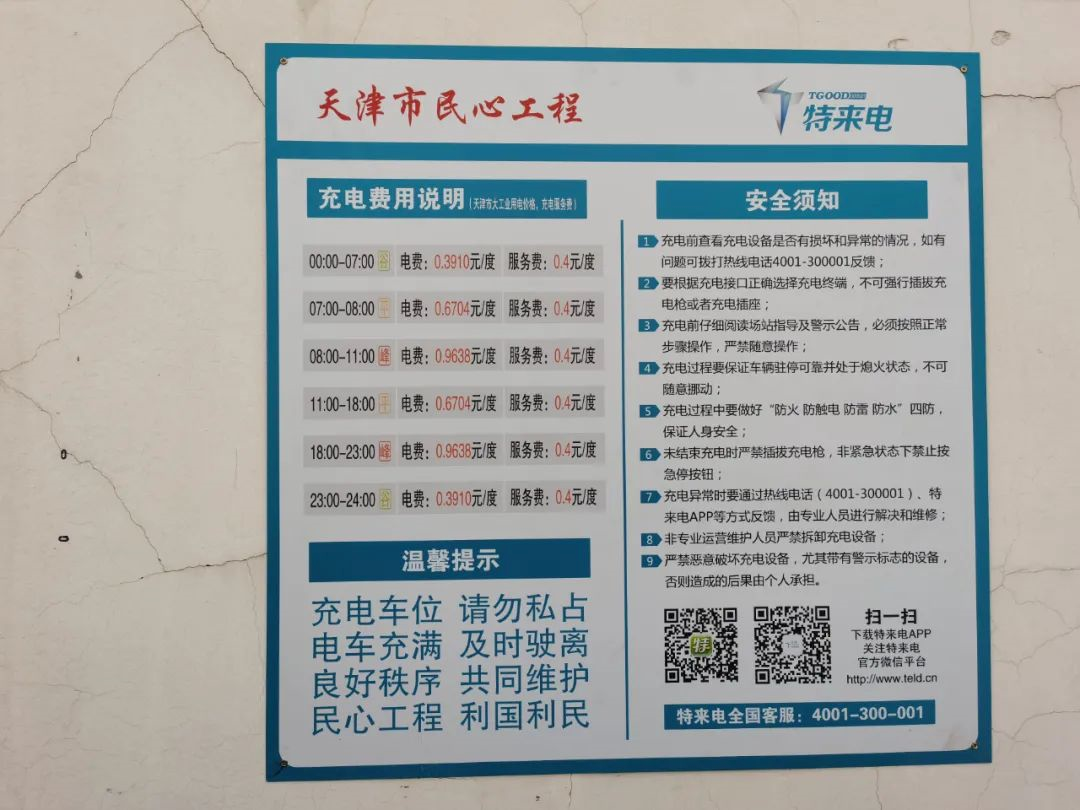
To ensure that the policy can be implemented, the main responsibility must be clear first. The “Plan” clarifies that each district government should implement the main responsibility of the local area and report the construction progress of the district at the beginning of each month to the Development and Reform Commission of the city. Uniform templates and contracts, including the “Demand Table for Public Charging Stations in Residential Areas”, the “Recommended Service Agreement for the Tianjin Citizen’s Heart Project ‘Construction of Public Charging Stations in Residential Areas'”, and the “Construction Instructions ‘Tianjin Citizen’s Heart Project Construction of Public Charging Stations in Residential Areas’”, should be provided to avoid vicious competition and facilitate unified management.
In order to mobilize the enthusiasm of the contracted charging operation companies, the Tianjin Municipal Government provides a one-time subsidy of 4,000 yuan for each social charging station that passes the acceptance inspection, as well as a 500-yuan annual operation subsidy for charging stations that meet the online operation requirements, with a duration of 2 years. Most community public charging stations are AC slow-charging piles, and such subsidy amounts are quite generous.
At the same time, in order to benefit the people and make community public charging stations operate by themselves, the “Plan” stipulates that charging operation companies are allowed to charge for charging services but cannot exceed 0.4 yuan/kWh, which is 0.2-0.3 yuan/kWh cheaper than public charging stations outside.According to the logic of “Discovering problems – Analyzing problems – Finding solutions – Setting goals – Implementing – Yearly assessment and review – Implementing again”, the community charging in Tianjin has been operating in this cycle for 3 years.
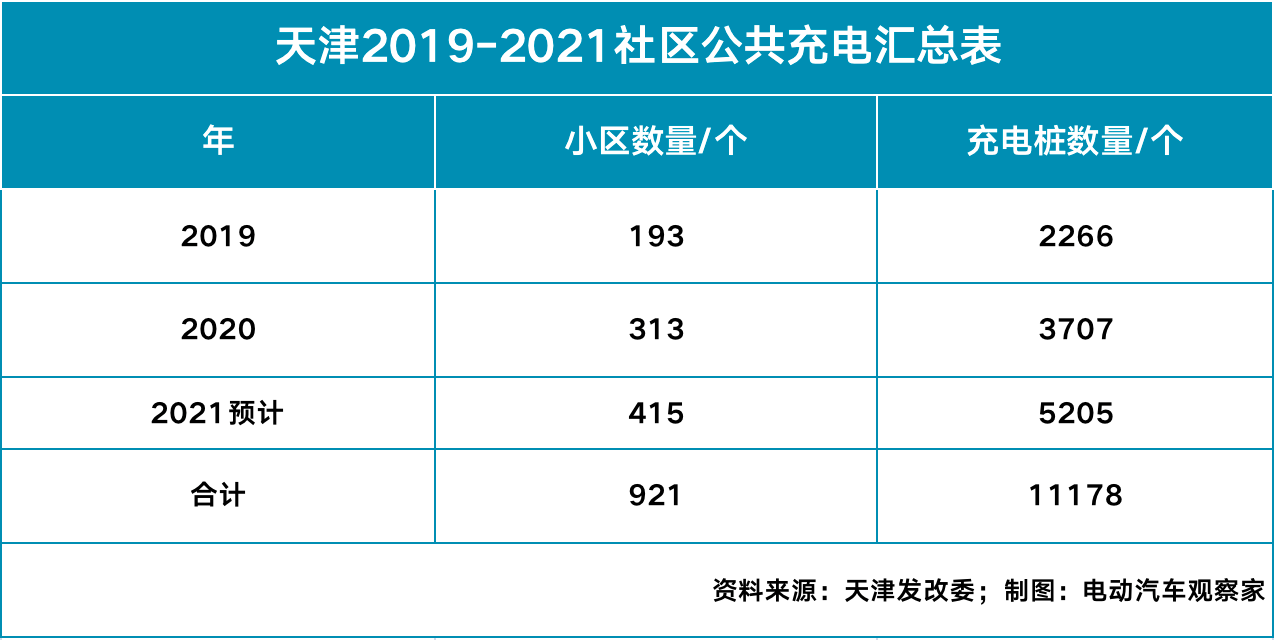
“Every year, all relevant policy documents, the list of construction companies, as well as the list and quantity of community implementation are disclosed online, striving for fairness and transparency,” said Zhao Jianhui.
The community charging model explored by Tianjin is exactly the “unified construction and operation” model that has been continuously mentioned in the central government’s policies over the past two years.
In the “Implementation Opinions on Further Enhancing the Service Guarantee Capacity of Electric Vehicle Charging Infrastructure” released by ten ministries in January of this year, it mentioned at the beginning that “we should speed up the construction and installation of charging facilities in residential communities”, encourage charging operators or residential community management units to accept commission from residential property owners, carry out “unified construction and operation” of charging facilities in residential communities, and provide paid services such as unified construction, operation, and maintenance of charging facilities to improve the security management level of charging facilities and the proportion of green electricity consumption.
In addition to the central government, many local governments are also studying the community “unified construction and operation” model, and have noticed the Tianjin model.
“Many other provincial and municipal governments come to us to exchange and learn, and we teach them without reservation,” said Zhao Jianhui, who is proud of doing such a grounded thing as a macro-management department and being recognized by peers.
How is the actual operation?
During the Tianjin investigation, we visited multiple charging stations, including old neighborhoods from the 90s, public rental housing communities built in 2015, and newly built communities which are just delivered. A typical community feature is that there is no planning for fixed parking spaces, and vehicles park randomly.
Due to the tight parking spaces in most communities and the lack of understanding about charging piles among residents, there were individual residents obstructing construction at some communities in the early stage.
“Some elderly residents are not familiar with the new thing of charging piles, and will come out to obstruct and not allow the construction of charging piles. There are all kinds of reasons, so we can only communicate repeatedly,” said Zeng Huan, the general manager of Huarui Fast Charge, when talking about the difficulties encountered in the implementation.
The most common phenomenon observed in the charging stations visited on site is still that the parking space is occupied by fuel vehicles, which makes it difficult for electric vehicles to charge, especially in communities with tight parking.
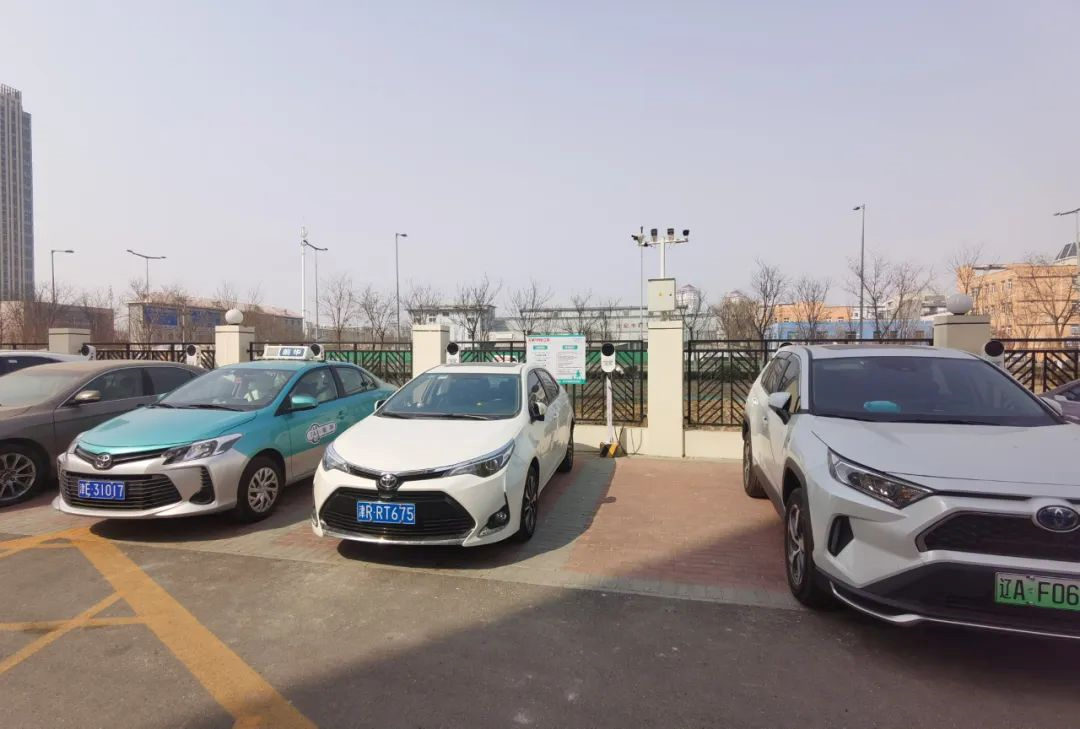 “This issue is essentially a problem of parking resources,” said Liu Haibin, the operation manager of Tianjin Teld New Energy. However, in dynamic terms, the conflict between petrol cars and electric car owners will naturally resolve. “The balance of power between petrol cars and electric cars will form a counterbalance in a certain period of time. As neighbors in the community, they will not create an unsightly situation and will gradually understand each other. As more and more electric car owners emerge, they will also spontaneously maintain charging order.”
“This issue is essentially a problem of parking resources,” said Liu Haibin, the operation manager of Tianjin Teld New Energy. However, in dynamic terms, the conflict between petrol cars and electric car owners will naturally resolve. “The balance of power between petrol cars and electric cars will form a counterbalance in a certain period of time. As neighbors in the community, they will not create an unsightly situation and will gradually understand each other. As more and more electric car owners emerge, they will also spontaneously maintain charging order.”
In the Teld charging station at Shengning home in Tianjin, there is a total of 24 AC charging piles, and during the several hours we stayed there, we did not find any petrol car taking up a space. Two electric car owners who came to charge said that when the charging piles were just built, they also had a “fight” with petrol car drivers. After more than half a month, petrol cars stopped parking in the charging spaces. They all remarked that with the increasing number of electric cars in the community, 24 charging piles are clearly not enough. They are usually fully occupied between 6 pm to 7 pm and hope more charging piles can be built.
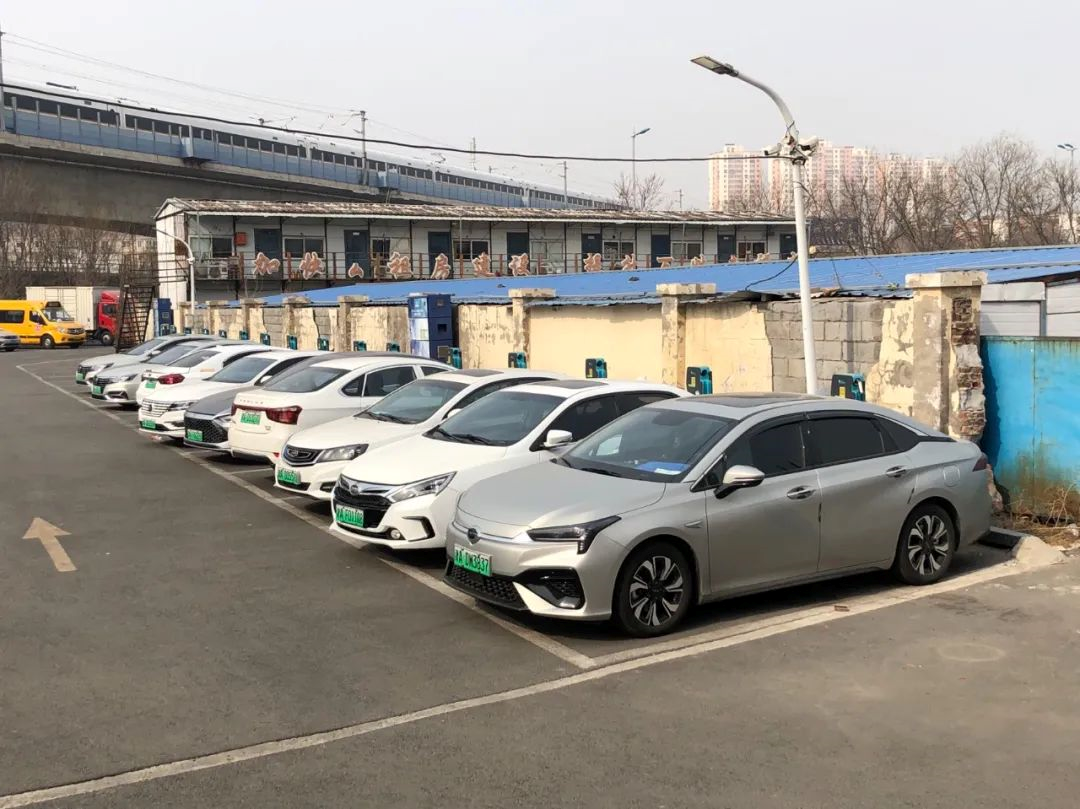
The same situation has also occurred in Yidian New Energy Changhua community. According to the property manager of the community, the community was built in 1999 and is a typical old community with 29 buildings and a total of 1,354 households. There are more than 900 registered motor vehicles in the community, exceeding the number of parking spaces.
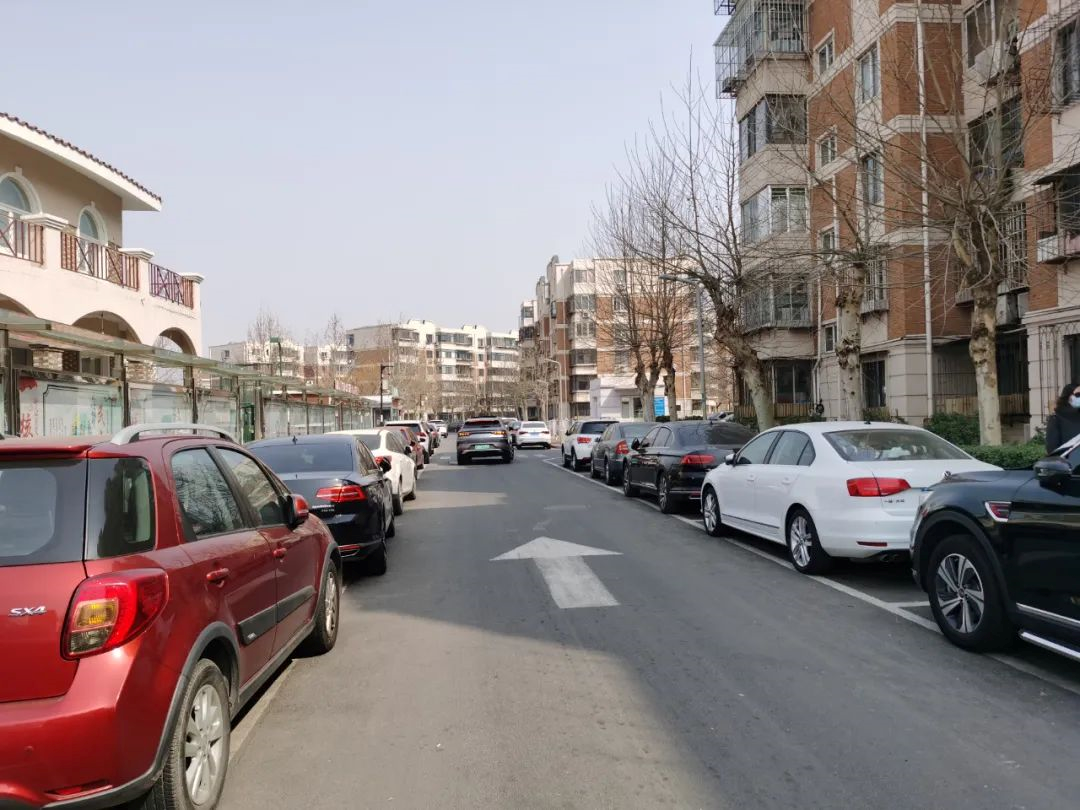
To meet the charging needs of electric cars in the community and avoid conflicts caused by petrol cars occupying spaces, the property has provided a dedicated area, which is separated by barriers, allowing only electric cars to enter. In the dedicated charging and parking area, Yidian New Energy has deployed 18 AC charging piles, which are fully occupied at night.
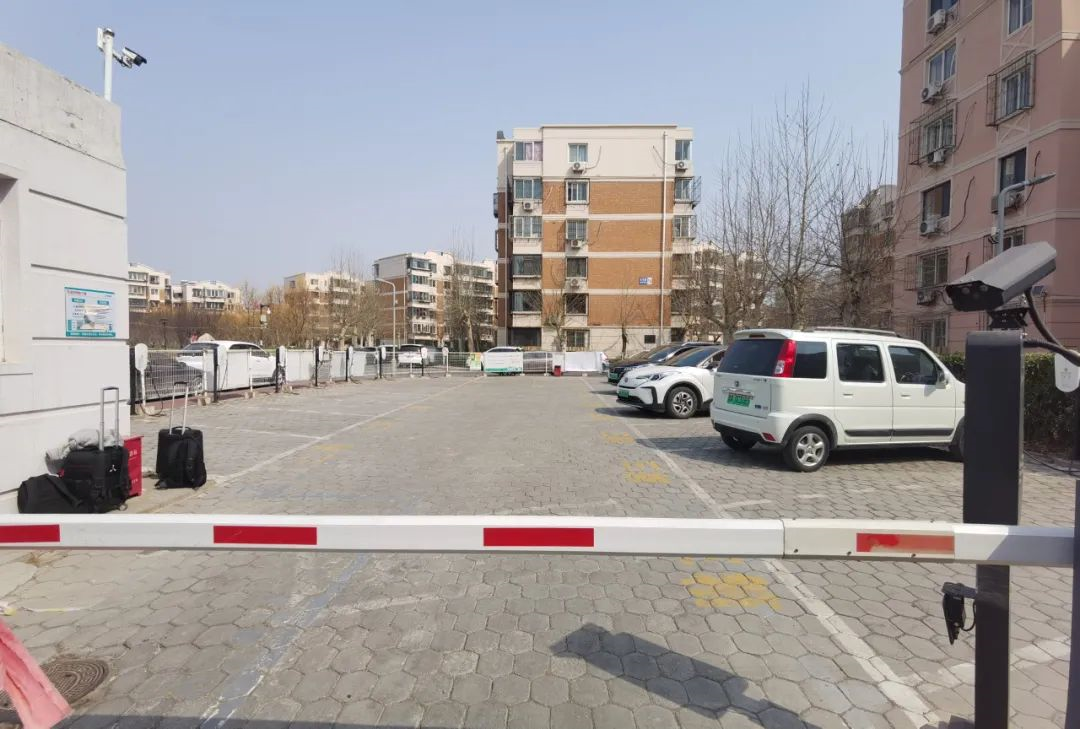
The property manager of the community said that before the charging piles were built, there were only a few electric cars in the community, but now there are more than 100, and 18 charging piles are not enough.
“Building charging piles is only half of the job. We also need to manage them well. For communities with a large and complex environment, it is difficult for us as operators to arrange personnel to monitor and manage. The cost is too high. The best organizer is the property company. We need to find ways to motivate their initiative while organizing owners to maintain self-discipline. As long as we can create a charging atmosphere, things will go smoothly,” said Sun Dazhi, the general manager of Tianjin Huichong New Energy.
The key to the good management of the Changhua charging station lies in the role of its property company, Tianjin Tiandi Shun Property Management Co., Ltd. Within 2 minutes of our arrival at the station, the property manager came over and asked about our situation. After learning about our purpose, he gave us a detailed introduction to the electric vehicles and charging situation in the community. Nowadays, Changhua Community is a harmonious and civilized community in Tianjin, and this charging station has become a service model for Tianjin.
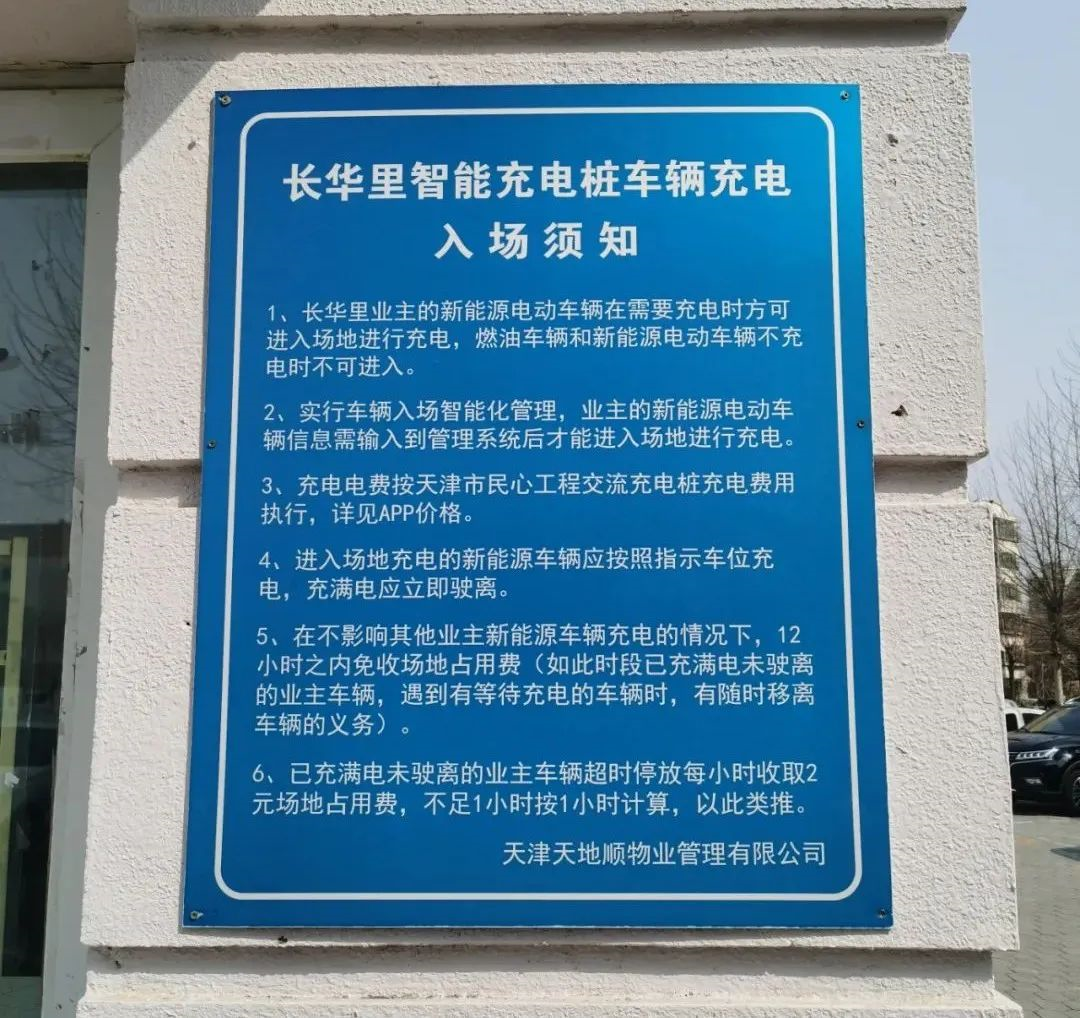
During our visit, we also found that because the community’s public charging piles are all 7KW AC charging piles, most owners will choose to charge the car after work and then occupy a parking space until leaving the next day, which limits the service capacity of the charging piles.
Regarding this issue, Zhao Jianhui gave his opinion. In this community environment, everyone goes to sleep at night, and even if they install fast charging, they will still plug in and go to sleep at home. No one will come out to move the car in the middle of the night. At the same time, with the increasing range of electric vehicles, not everyone needs to charge every day. Compared to privately declared personal charging piles, which are idle for nearly 5 days a week, public charging piles in the community can serve 1-5 vehicles per day, and their efficiency is much higher than that of personal charging piles.
Is the Tianjin model sustainable? Can it be replicated?
Currently, Tianjin’s charging operators are actively participating in the construction of public charging facilities in communities. On the one hand, the subsidies basically cover the costs of charging operation companies; on the other hand, long-term charging service fees are also worth looking forward to.
“Our company Huaruikuaichong has built more than 1,800 community charging piles in Tianjin. From our current perspective, the overall situation is losing money, but the monthly charging volume has been significantly increasing, proving that there are more cars coming,” said Huaruikuaichong’s general manager Zeng Huan.
According to several charging operators in Tianjin, although the overall community charging piles are losing money, the charging volume growth is considerable, and individual charging stations have already made a profit.
According to community charging data provided by a charging operator, the average daily charging volume per pile increased from 3.6 kWh in June 2021 to 8.7 kWh by the end of December, more than doubling in six months. The daily charging volume on some individual charging stations has reached 36 kWh, which is quite impressive.
“Without government subsidies, if a community charging pile can reach 10 kWh per pile per day, it can achieve a break-even point,” said a charging operator in Tianjin.
“At present, the market still needs to be cultivated. Community charging is a difficult problem. Compared with public fast charging stations outside, it costs less to achieve more, and it improves the happiness of people’s lives. Based on the current utilization rate, long-term support is still needed, and subsidies will be first eliminated from public charging stations,” explained Zhao Jianhui.It is foreseeable that as the proportion of electric vehicles in the community increases, community public charging stations will also be able to achieve self-generation.
Regarding the sustainability of operations, Sun Dazhi believes that “after 1-2 years of operation by the charging operating enterprise, it can be transferred to the property, or the service fee can be proportionally reversed, allowing the property to take a larger share, and truly involve the property. This can enhance the enthusiasm of property management while also beneficial to the service reputation and performance of the property.”
Can the “unified construction and operation” model in Tianjin be replicated in other cities? Zhao Jianhui believes it is entirely possible, because the problems faced by first, second, and third-tier cities in China are similar, such as concentrated residential communities, difficult construction of charging poles in old neighborhoods, tight parking resources, insufficient power capacity, and difficult construction. Building public charging poles in communities where individual charging poles cannot be applied for is a relatively low-cost and highly efficient solution.
In the policy on charging for residential communities launched in Chengdu last year and in Shanghai this year, the construction ideas of “unified construction and operation” were also highlighted.
“Generally, the ‘people’s livelihood project’ lasts for three years, but we will continue to work on community public charging for a long time, while also piloting new solutions such as orderly charging and V2G,” Zhao Jianhui said.
Tianjin has made a good start in public charging for communities. Further measures for more participation, economies of scale, operation improvement, technological innovation, and model innovation are needed to further enhance community charging efficiency to truly achieve sustainability, as government subsidies will have a day of withdrawal.
This article is a translation by ChatGPT of a Chinese report from 42HOW. If you have any questions about it, please email bd@42how.com.
